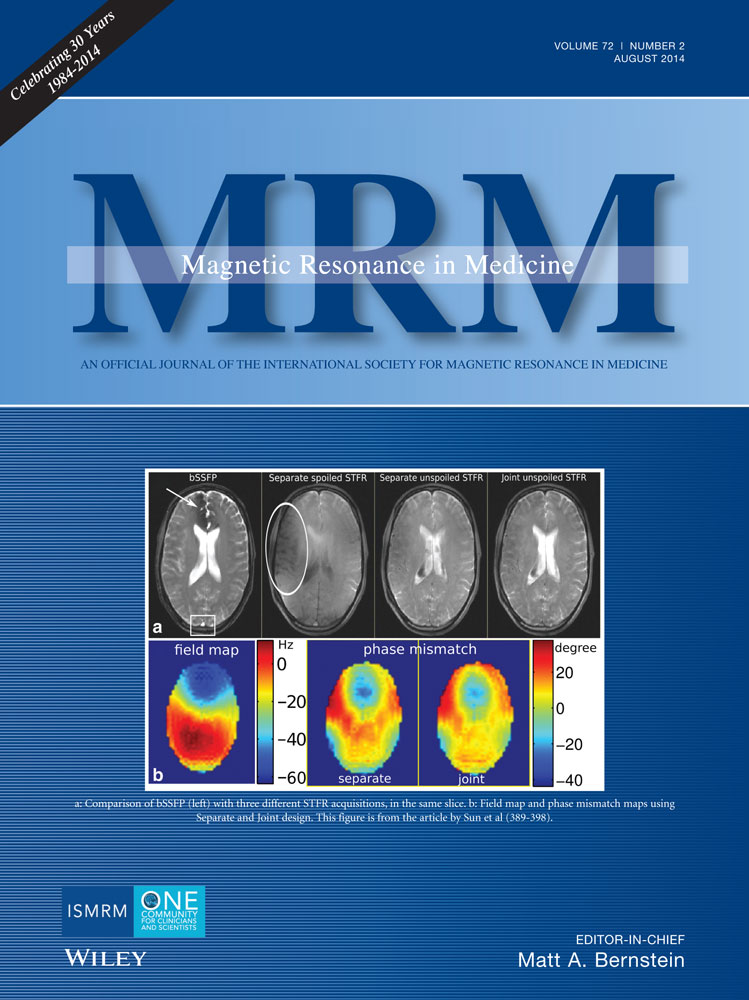Field camera measurements of gradient and shim impulse responses using frequency sweeps
Abstract
Purpose
Applications of dynamic shimming require high field fidelity, and characterizing the shim field dynamics is therefore necessary. Modeling the system as linear and time-invariant, the purpose of this work was to measure the impulse response function with optimal sensitivity.
Theory and Methods
Frequency-swept pulses as inputs are analyzed theoretically, showing that the sweep speed is a key factor for the measurement sensitivity. By adjusting the sweep speed it is possible to achieve any prescribed noise profile in the measured system response. Impulse response functions were obtained for the third-order shim system of a 7 Tesla whole-body MR scanner. Measurements of the shim fields were done with a dynamic field camera, yielding also cross-term responses.
Results
The measured shim impulse response functions revealed system characteristics such as response bandwidth, eddy currents and specific resonances, possibly of mechanical origin. Field predictions based on the shim characterization were shown to agree well with directly measured fields, also in the cross-terms.
Conclusion
Frequency sweeps provide a flexible tool for shim or gradient system characterization. This may prove useful for applications involving dynamic shimming by yielding accurate estimates of the shim fields and a basis for setting shim pre-emphasis. Magn Reson Med 72:570–583, 2014. © 2013 Wiley Periodicals, Inc.




